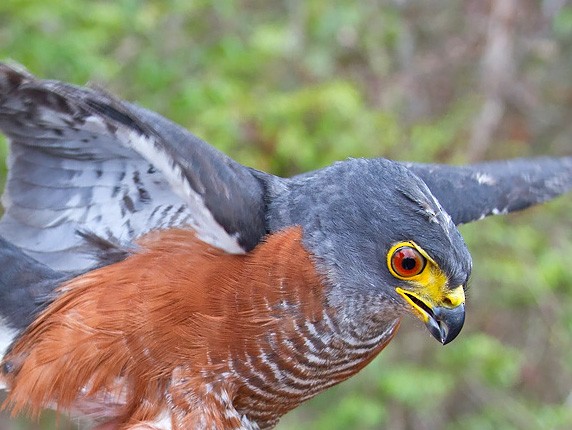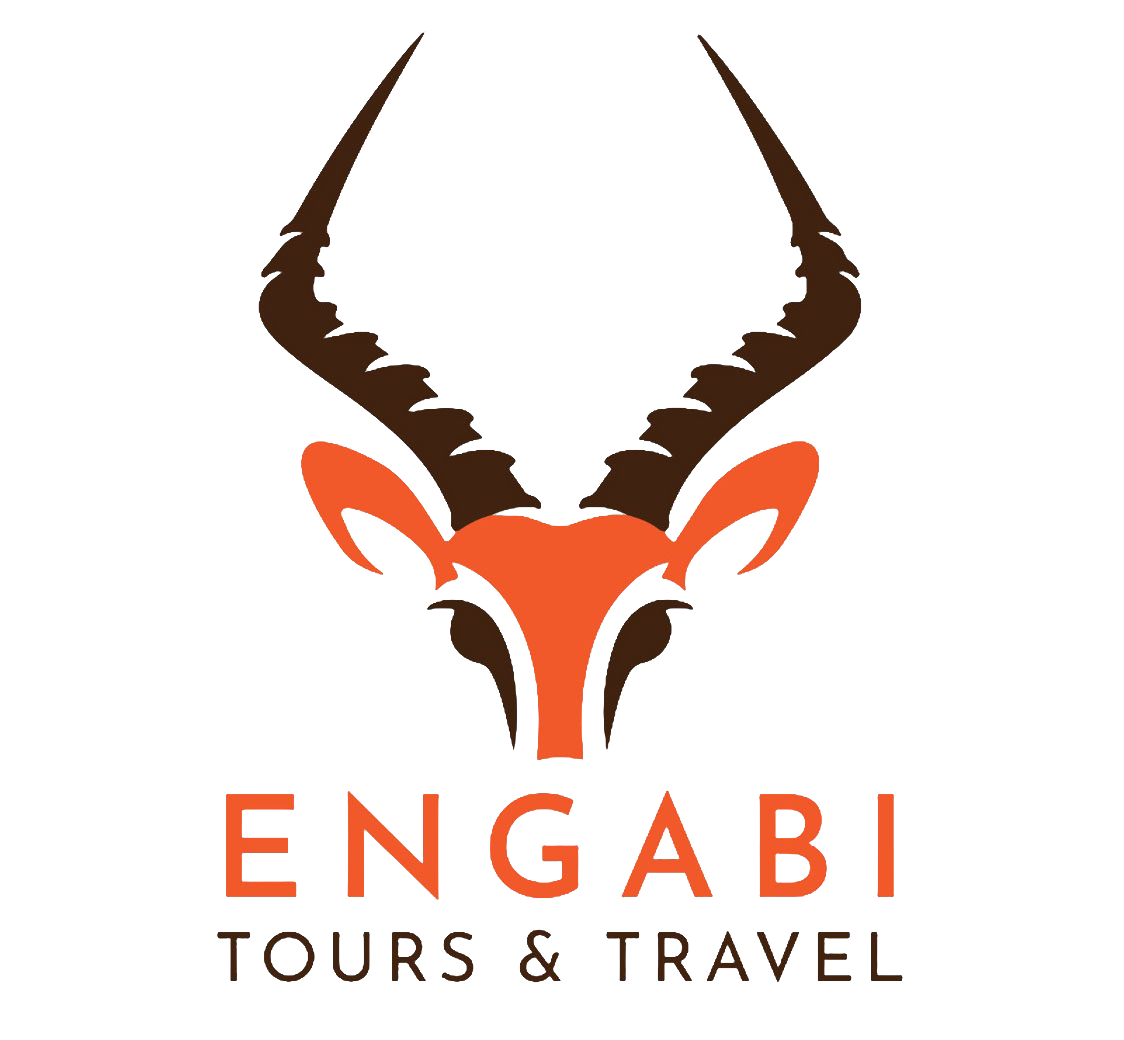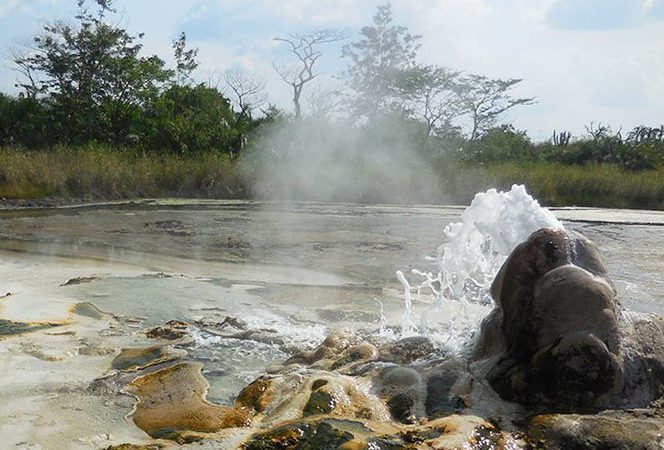Semuliki National Park is an environmentally varied national park situated in the Bundibugyo area of southwest Uganda. One of Uganda’s newest national parks, this unique tourism attraction was only founded. This 542 square kilometer national park in Uganda extends from the north east region of Bundibugyo to the southern shores of Lake Albert in Ntoroko. It is located in the western arm of the rift valley. Semuliki Flats, the Democratic Republic of the Congo, and the Rwenzori Mountains are all located on each side of Semuliki National Park.
Attractions in Semuliki national park
Sempaya hot springs
Sempaya hot springs are two distinct hot spring systems, known as male and female, that are separated by 30 minutes of walking between them. Male hot spring Bitende, whose hot waters shoot out at a force of 12 meters, and female hot spring Nyasimbi are both located in separate locations. Due to its extremely hot water, tourists prefer the female hot spring, which jets at a distance of 2 meters.
Wildlife
Around 60 different animal species call Semuliki home, and both primates and mammals may be found in the park’s savannah and forest flora. Antelopes, blue duikers, forest Beecroft’s flying squirrels, small collared fruit bats, pygmy squirrels, water chevrotains, bay duikers, African buffaloes, leopards, hippopotamuses, mona monkeys, water chevrotains, bush babies, African civets, African elephants, and a variety of other mammals are among the mammals. The black and white colobus monkey, chimpanzees, olive baboons, red-tailed monkey, blue monkey, vervet, galagos, and Pottos are among the primates that call Semuliki National Park home.
Bird species
The park is covered in lovely vegetation, including savannah grassland and the Ituri forest, which attracts a variety of avian species to the area. Over 400 different bird species have been recorded in the Semuliki National Park, including the Spot-breasted Ibis, the long-tailed hawk, the Nkulengu rail, the western bronze-naped pigeon, the yellow-throated cuckoo, the black-throated coucal, the white-bellied kingfisher, the piping hornbill, the red-billed dwarf hornbill, the black dwarf hornbill, the white-cre
Vegetation cover
Beautiful short open savannah grass and the evergreen semuliki forest cover, which is an extension of the Ituri forest of the Democratic Republic of the Congo, make up the park’s beautiful vegetation cover, which serves as a habitat for a variety of wildlife species.
Semuliki National Park activities
Game drive
With its open savanna grass cover, Semuliki National Park offers an incredible game reserve activity. On a game drive, you can view and appreciate the park’s beauty as well as a variety of animal species, including the African buffalo, leopard, hippopotamus, mona monkey, water chevrotain, bush babies, African civet, African elephant, Pygmy scaly-tailed flying squirrel, bay duiker, and many others.
Visiting the hot springs
It is astonishing to see hot water emerge from a group where there is no fire to make it hot. Visiting Sempaya hot springs is a really thrilling experience. You can observe water bursting from the ground at this location, and some foods, such as eggs and potatoes, are boiled in hot water before being served. Sempaya hot springs provide a picturesque setting for photographs if you are a photographer or picture fanatic.
Bird watching
Semuliki National Park is a significant birding location that is home to a variety of colorful bird species. While bird watching there, you may see birds like the black-throated coucal, white-bellied kingfisher, piping hornbill, red-billed dwarf hornbill, black dwarf hornbill, white-crested hornbill, white-thighed hornbill, black-casqued wattled hornbill, red-rumped Tin These birds can be observed in the park’s short savanna vegetation and in the forest trees.

Cultural encounter
The pygmy hunter-gatherers known as the batwa people dwell on the fringes of Semuliki National Park; they were the original inhabitants of the Ituri Forest before it was designated as a national park. Until this day, these folks continue to lead an antiquated lifestyle, which may be seen while taking a cultural tour of their neighborhood. You have the opportunity to converse with them, hear their numerous tales, and observe a variety of things, including their hunting prowess, the construction of homes from local materials, songs and dances, and many other fascinating cultural and traditional characteristics.
Nature guided walks
Another exciting activity in the Semuliki National Park is taking guided nature walks, which take you to various park areas including the savannah grassland and a section of the Ituri forest. You get to spot and encounter many wildlife species habited in the park and they include African buffalo, leopard, hippopotamus, Mona monkey, water chevrotain, birds like white-bellied kingfisher, piping hornbill, red-billed dwarf hornbill, black dwarf hornbill, white-crested hornbill, white-thighed hornbill, black-casqued wattled hornbill, red-rumped Tinkerbird, lyre-tailed honeyguide and many more. On nature-guided hikes, you can visit many attractions in Semuliki National Park by following the trails Kirumia, Sempaya, and Red Monkey.
Primate tracking
Semuliki Forest, a section of the Ituri Forest located in the park, is where primate tracking in the Seluliki National Park takes place. Here, you may see primates like the black and white colobus monkey, chimpanzees, olive baboons, red-tailed monkeys, blue monkeys, vervet, galagos, and Pottos.
You can explore Semuliki National Park by using the following trails:
Sempaya nature Trail
The wonderful Sempaya hot springs are reached by the Sempaya nature route, which takes you through the semuliki forest and past primates including black and white colobus monkeys, red-tailed monkeys, grey-cheeked mangabeys, and others.
Kirumia trail
A popular track for bird watching is Kirumia track, which travels through the Semuliki Forest to the Semuliki River, a haven for many different bird species.
Red monkey trail
Using the Red Monkey Trail, which leads through the park to the Semuliki River, you can see Dee Brazza monkeys.
Best time to visit Semuliki national park
The best time to visit Semuliki National Park is during the dry months. National parks in Uganda are visited throughout the year, and the same is true with Semuliki. The two dry seasons that the park experiences are from December to May and August to November.
Because there is little rain during the dry months and the routes leading to game drives are generally dry and passable, these months are ideal for travel. Additionally, the park’s short grass provides an opportunity for a solitary observation of animals.
Where to stay in Semuliki national park
Compared to other national parks in Uganda, this one has less lodging options that are both inside and outside the park and provide cozy lodging and food. Among these amenities are the luxurious Semuliki safari lodge and Ntoronko Game Lodge. Budget hotels include Kirumia Guesthouse, Tooro Resort, UWA bandas and cottages, Hotel Vanilla, among many others. These lodging options will make your trip worthwhile.
How to reach Semuliki national park
The Semuliki National Park is accessible by both air and road. The park is located 287 kilometers from Kampala, and there are two roads that lead there: one goes from Kampala to Mubende, another to Fort Portal, and the other ends in the Bundibugyo area.
If you choose, you can travel from Kampala City to Masaka, Mbarara, Kasese, Fort Portal, and then the Bundibugyo area. You can go to Semuliki airstrip by chartered domestic flight from Kajjansi airstrip or Entebbe International airport. Both Fly Uganda and Aerolink Uganda Limited run these flights out of Kajjansi Airfield and Entebbe Airport, respectively.


